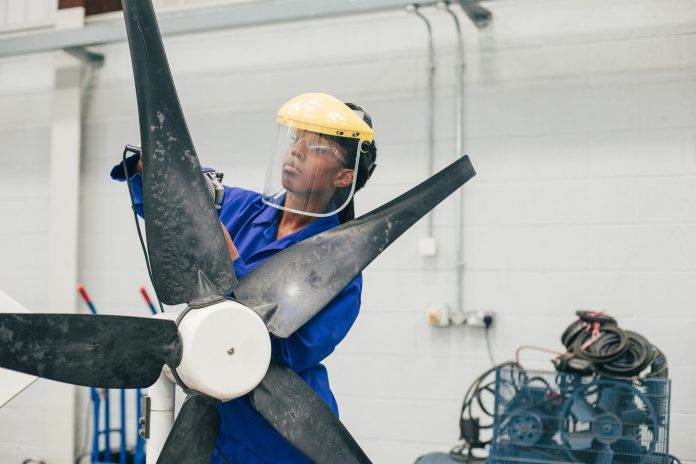Green campuses can be key to higher and further education institutions to achieve the sustainability targets prospective students increasingly look for
Higher and further education (HE and FE) institutions risk underestimating the importance sustainability holds for applicants when choosing a college or university, with the vast majority of prospective students agreeing that they would be proud to study at ‘green campuses’.
However, whilst these institutions are ideally placed to be at the forefront of innovation for net zero, new research by law firm Shakespeare Martineau has revealed that 2 in 5 are either not confident or unsure as to whether they will meet their decarbonisation targets by 2050.
What are green campuses?
The report defines a green campus as one which is carbon neutral, limits or eliminates food, water, and energy waste, and only works with like-minded suppliers and partners. It should also work closely with the local community, colleagues, and students to educate, innovate and drive sustainable improvements, making a positive contribution to local biodiversity and the wider environment through research, course curriculum, and proactive projects.
There are many benefits of green campuses
Among the many benefits of green campuses, the largest is that it will contribute to making a real difference to help the planet. With the climate crisis high on the public agenda, sustainability has become a daily challenge for everyone that will continue for the foreseeable future, so HE and FE institutions have a vital role to play.
Another key benefit of being a sustainable institution is that prospective students will react positively if they believe their place of study understands the importance of sustainability and climate change.
78% of prospective students believe that sustainability is an important part of learning
The report found that 69% of 16 to 19-year-olds are worried about climate change, 78% of prospective students believe that sustainability is an important part of learning, teaching, and research and that 75% would be influenced to join an institution if its leadership factor climate change in all decisions. These statistics overwhelmingly show the value that students place on sustainability and green measures, particularly when it comes to choosing where to study.
However, despite the clear demand for green campuses from prospective students, as well as from wider society, institutions remain unconfident as to whether they will be able to meet their decarbonisation targets by 2050 and identify a number of factors that are inhibiting them from becoming green campuses.
For example, the report found that 77% of institutions say that the lack of funding and investments plays a big part in delaying the move towards a greener campus, whilst 31% of education respondents cited resistance to change within the institution as a significant factor. A further 25% said lack of collaboration between parties across the institution contributed to slow progress on green initiatives.

Green-focused loans and strategic support
Despite these perceived barriers, there are plenty of ways for institutions to work around these factors and meet the expectations of prospective students, including taking advantage of green-focused loans and strategic support. One such example is the Public Sector Decarbonisation Scheme, which provides grants for public sector bodies to fund heat decarbonisation, for example, the installation of heat pumps and solar panels, and energy efficiency measures such as LED lighting and building management system upgrades for both modern and heritage buildings.
Additionally, institutions should begin to develop a strategy that engages all internal staff and students, from the governing body to individuals, to overcome internal roadblocks to improve the campus and make it green. This could be done by looking into curriculum planning and development to introduce green initiatives throughout learning. The key is to establish clear communication from the start, to encourage internal ‘buy-in’ as the strategy is developed and progressed.
Looking into curriculum planning and development to introduce green initiatives throughout learning
For the strategy to be successful, it is also important to look at the campus as a whole, whilst simultaneously drilling into the details of individual buildings, such as the location, footfall, and use. Examining which buildings are already fit for purpose and which ones need to be retrofitted to achieve zero carbon can help to create a prioritisation strategy for investment and to understand how to compensate for those that cannot be carbon neutral by design.
Technology will be key to supporting decision-makers
Technology will be key to supporting decision-makers as they seek to build this strategy, and there are a number of technologies available that can help to reduce carbon within buildings as they are renovated or rebuilt. Another example is the gamification of green apps which encourage staff and students to collect points for being green, resulting in potential prizes as further incentivisation for collecting the most points.
To create successful green campuses, higher and, further education institutions should think of changes not as individual projects but as long-term initiatives that will bring benefits not only to the planet but also to the next generation of students.
Despite institutions being concerned about achieving their decarbonisation goals by 2050, it is still possible to overcome challenges and meet their targets. Becoming a green campus is not just the responsibility of estates or sustainability managers but everyone at every level across the institution, and it is only through cooperation and a willingness to change that a greener future will be achieved.











